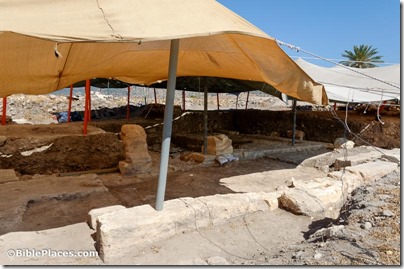“Forty-five shipwrecks, many dating back to ancient times, have been discovered off a Greek archipelago that is one of the Mediterranean’s richest underwater archaeological sites.”
A large and Roman mosaic has been discovered in Larnaca, Cyprus. A short video shows the excavation.
“A large number of expansive rock tombs which could constitute part of the world’s largest necropolis have been discovered during work carried out by the Şanlıurfa Municipality around the historic Urfa Castle in southeastern Turkey.”
“Excavation teams at an ancient site [Side] in the southern province of Antalya are struggling to find sponsors after it emerged that the site contains an ancient brothel.”
The Lion of Babylon is not faring well in part because of the visitors that keep climbing on its back.
The oldest writing found on papyrus is now on display in the Egyptian Museum in Cairo.
Philippi is in the latest group of sites to be named a UNESCO World Heritage site.
Some British MPs are proposing the return of the Elgin Marbles to smooth Britain’s departure from the EU.
Two Hellenistic marble sculptures from the Pergamon Museum in Berlin will remain on loan for the next two years at the New York Metropolitan Museum of Art.
The ancient Mamertine Prison in Rome will soon be open after three years for restoration and excavation.
After a $73 million renovation, Yale will soon be re-opening the Beinecke Rare Book & Manuscript Library.
“Dendrochronological and radiocarbon research by an international team led by Cornell archaeologist Sturt Manning has established an absolute timeline for the archaeological, historical and environmental record in Mesopotamia from the early second millennium B.C.”
Ben Witherington III has more than 20 posts on his recent trip to Turkey. Highlights include visits to the Miletus Museum, the Izmir Museum, and the Zeugma Museum (which has a splendid mosaic).
New book out from Eisenbrauns: “Did I Not Bring Israel Out of Egypt?” Biblical, Archaeological, and Egyptological Perspectives on the Exodus Narratives, edited by James K. Hoffmeier, Alan R. Millard, and Gary A. Rendsburg.
HT: Agade, Joseph Lauer, Ted Weis, Charles Savelle, Explorator, Daniel Wright
